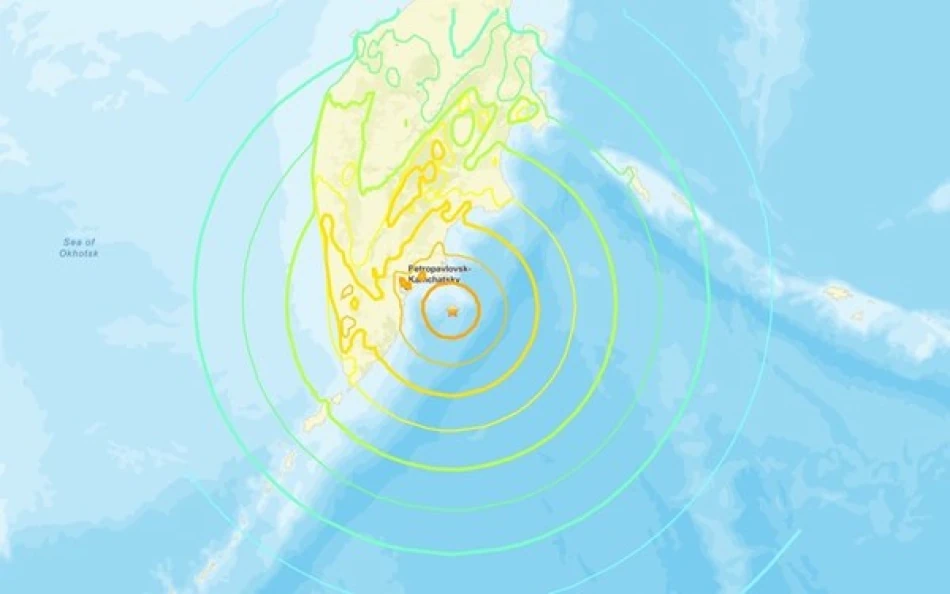
Potential Tsunami Looms Over Kamchatka After Powerful Earthquake and Volcanic Eruption
Russia's Far East Shaken by Rare Volcanic Awakening and Tsunami Warnings After Major Earthquake
A 7.0-magnitude earthquake near Russia's Kuril Islands has triggered tsunami warnings across three regions of the Kamchatka Peninsula, while simultaneously awakening a volcano that has remained dormant for six centuries. The Krasheninnikov volcano erupted overnight for the first time in 600 years, marking a dramatic geological event that underscores the volatile nature of the Pacific Ring of Fire and could signal increased seismic activity in one of the world's most geologically active regions.
Seismic Activity Triggers Dual Threats
Russia's Emergency Services Ministry issued tsunami warnings for three areas of Kamchatka following the earthquake that struck the Kuril Islands chain. While the Pacific Tsunami Warning Center confirmed no official tsunami alert was issued, Russian authorities maintained a cautious stance, advising residents to stay away from coastal areas despite expectations of relatively low wave heights.
The timing of both the earthquake and volcanic eruption suggests a potential geological connection, particularly given that another major quake struck the region just last week. That earlier seismic event generated tsunami warnings as far away as French Polynesia and Chile, followed by an eruption of Klyuchevskoy, Kamchatka's most active volcano.
Historic Volcanic Awakening Raises Scientific Interest
600-Year Silence Broken
The eruption of Krasheninnikov volcano represents a significant geological milestone. According to Olga Girina, head of Kamchatka's volcanic response team, historical records show the volcano's last confirmed activity occurred over a 40-year period starting in 1463. The 1,856-meter-high volcano sent an ash column soaring to 6,000 meters, with the ash cloud drifting eastward toward the Pacific Ocean, away from populated areas.
Russian aviation authorities classified the eruption at orange level, indicating substantial risk to aircraft operations—a critical concern given Kamchatka's position along major Pacific air routes between Asia and North America.
Implications for Regional Stability and Global Monitoring
Ring of Fire Dynamics
The simultaneous seismic and volcanic activity highlights the interconnected nature of the Pacific Ring of Fire, where roughly 90% of the world's earthquakes occur. Kamchatka Peninsula sits at a particularly volatile intersection of tectonic plates, making it a natural laboratory for understanding how major seismic events can trigger volcanic activity across extended periods.
Russian scientists warned Wednesday of potential strong aftershocks in the coming weeks, suggesting the region remains in an active seismic phase that could produce additional geological events.
Economic and Aviation Concerns
The orange-level aviation warning carries significant implications for air traffic across the North Pacific. Volcanic ash poses severe risks to aircraft engines, and the eastward drift of the ash cloud could potentially affect trans-Pacific flight routes that represent billions of dollars in annual commerce.
For Russia's sparsely populated Far East, the immediate human impact appears limited due to the remote location and favorable wind patterns. However, sustained volcanic activity could affect local fishing industries and tourism, both important economic drivers for the region.
Scientific Significance and Future Monitoring
The reawakening of Krasheninnikov after six centuries provides volcanologists with a rare opportunity to study how long-dormant volcanic systems respond to major seismic triggers. This event may offer insights into volcanic prediction models and help scientists better understand the relationship between earthquake cycles and volcanic activity.
The clustering of recent seismic events—including last week's major earthquake and the eruption of Klyuchevskoy volcano—suggests Kamchatka may be entering a more active geological period. Such patterns have historically preceded extended phases of increased volcanic and seismic activity in the region, making continued monitoring essential for both scientific understanding and public safety.
 Layla Al Mansoori
Layla Al Mansoori







